By November 1947 Auchinleck, Supreme Commander based in New Delhi, being convinced that Indian Cabinet was seeking to destroy and undo Pakistan by economic and military means, was forced to resign. As the build-up of Indian forces in Jammu and Kashmir continued, Pakistan Army units were being hurriedly organized and equipped without any base for manufacture of ammunition, signal stores, equipment or vehicles. Simultaneously, Pakistan National Guards were raised from ex-servicemen and other volunteers along border areas to provide a second line of defence. By February 1948 Indian build up in Jammu and Kashmir reached five brigades plus, under two full-fledged division Headquarters. Our 101 Brigade, commanded by Brigadier Akbar Khan was rushed into the critical front to forestall and halt the Indian offensive along Uri-Muzaffarabad axis. In April 1948, Commander-in-Chief Pakistan Army appreciating the threats in the north along Muzaffarabad-Kohala axis, and in the south along Bhimber-Mirpur-Poonch axis further reinforced the front with elements of 7 Division to halt the Indian offensive at Chakothi. Reinforcements were rushed overnight to Tithwal sector to defend Muzaffarabad front 9(F) Division was also moved to reinforce 7 Division in Tithwal, Uri and Bagh sectors. 7 Division was thereafter moved to the southern front. In May Pakistan informed the United Nations of these moves. By June, Pakistan had five brigades in Jammu and Kashmir together with Azad Kashmir forces and elements of the para-military Frontier Corps, holding twelve Indian brigades (with 4 to 5 battalions each) supported by armour, artillery and Indian Air Force. Indian summer offensive was decisively beaten and halted. Some months later, two brigades of 8 Division from Quetta further reinforced Muzaffarabad-Uri front.
On 14 August 1948, the first anniversary of Pakistan , General Headquarters sent the following message to the Quaid-e-Azam, “Loyal and grateful greetings from the Army on the first anniversary of Independence Day. We serve and shall serve Pakistan with all our hearts and souls. Pakistan and its Creator, Zindabad.” The Quaid-e-Azam was at that time in Quetta, fighting his own battle for survival against a deadly affliction. In December, Pakistan Army planned to go on the offensive, ‘Operation Venus’, with 7 Division to cut off the main supply route at Beri Pattan Bridge area, and isolate Indian forces in Nowshera-Jhangar-Poonch sector. On 14 December, in a pre-attack artillery bombardment the Beri Pattan bridge area containing ammunition, rations, petrol and supplies in a two-mile area was totally destroyed together with Indian divisional Headquarter, isolating the Indian forces in that sector. The Indian Army was taken by surprise. At midnight on 30 December, India asked for ceasefire with effect from 1 January 1949. Pakistan accepted, as the fate of Jammu and Kashmir had been taken over by the United Nations. By early 1949 Pakistan Army had completed its formative stage. It halted the Indian offensive and prevented it from totally over-running Jammu and Kashmir, and closing up to Pakistan ’s vital border areas, thus ended the war in Jammu and Kashmir. Pakistan Army continued its reorganization. An ordnance factory to produce small arms and ammunition was established at Wah. The threat from India was by no means over. In spring of 1950 and again between July and October 1951 the Indian Army concentrated on Pakistan‘s borders and transgressed into Azad Kashmir and West Pakistan territory forty eight times. The Indian Air Force violated Pakistan ’s air space thirty times thus bringing the two countries very close to another all out war through India ’s coercive diplomacy and interventionist strategy.
|
The Indian forces intruded into Pakistani area in the Rann of Kutch in April 1965. In a sharp and short conflict, the Indian forces were ejected. Both the armies had fully mobilized, with eyeball to eyeball contact. Pakistan proposed cease-fire, India accepted. An agreement was signed: the forces disengaged. The Award by the Arbitration Tribunal vindicated Pakistan ’s Position.
Past midnight on 5/6 September, without a formal declaration of war, Indian Army crossed the international border and attacked Lahore and Kasur fronts. Pakistan Army and Pakistan Air Force halted the attack in its tracks, inflicting heavy casualties on the aggressor. On 7 September a single Pakistan Air Force Pilot, Squadron Leader M.M. Alam, Sitara-i-Juraat, in his F-86 Sabre shot down five Indian Air Force attacking Hunter aircraft in a single sortie, an unbeaten world record “On night 6/7 September three teams of our Special Services Groups were para-dropped on Indian Air Force bases at Pathankot, Adampur and Halwara to neutralize them.To relieve pressure on Lahore front, on night 7/8 September, after crossing two major water obstacles in a bold thrust, Pakistani armoured and mechanized formations supported by artillery and Pakistan Air Force overran area Khem Karn, 6 to 8 miles inside Indian territory. Vital Indian positions at Sulemanki and across Rajasthan and Sindh were also captured in bold, swift attacks.
On night 7/8 September, 1 Corps of Indian Army launched its main effort east of Sialkot with one armoured and three infantry divisions on our extended 15 Division front, screened only by gallant 3 Frontier Force and B Company 13 Frontier Force (Reconnaissance & Support). 24 Infantry Brigade (Brigadier A.A Malik, Hilal-i-Juraat) on the move in area Pasrur, rushed 25 Cavalry (Lieutenant Colonel Nisar Ahmad, Sitara-i-Juraat), on 8 September to delay and disrupt enemy thrusts. As soon as the presence of Indian 1 Armoured Division was confirmed, Pakistan Army rushed forward to stop the onslaught on a 30-mile front. The biggest tank battle since World War II was fought on the Chwinda front by 6 Armoured Division with under command 24 Infantry Brigade Groups and valiantly supported by 4 Corps Artillery (Brigadier A.A.K. Choudhry, Hilal-i-Juraat). The main effort of the Indian Army was blunted, inflicting heavy and troop casualties. Pakistan Air Force support helped turn the tide of the battle. Before a counter offensive by 6 Armoured Division on 22 September could be launched, Indian asked for cease-fire in the United Nations. India ’s aggression against our international borders without a formal declaration of war had cost it, apart from heavy personnel, material land economic losses, 1617 sq. miles of territory as compared to 446 sq. miles of our open and undefended territory. Pakistan Army captured 20 officers, 19 Junior Commissioned Officers, and 569 Other Ranks.
|
With 1971 commenced the most tragic year of our history. Failing to resolve a political problem by political means, a Martial Law regime, manipulated by some megalomaniac politicians, resorted to military action in East Pakistan on night 25/26 March. Widespread insurgency broke out. Personnel of two infantry divisions and Civil Armed Forces with weapons were airlifted in Pakistan International Airlines planes, over-flying about 5000 miles non stop via Sri Lanka in the first week of April 1971 – the longest operational air move by Pakistan Army. By May near normalcy had been restored, thanks to the fast reaction, dedication and cool courage of our soldiers, sailors and airmen operating in a hostile environment under adverse climatic and terrain conditions, without adequate logistic or medical support. India’s immoral covert armed intervention having failed, by October it had concentrated four times our strength in over 12 divisions (400,000) supported by five regiments of tanks, and about 50,000 activists trained and equipped by Indian Army. Indian Navy’s one aircraft carrier, eight destroyers/frigates, two submarines and three landing craft, against our four gunboats, eight Chinese coasters and two landing craft supported them. Eleven Indian Air Force squadrons – 4 Hunter, 1 SU-7, 3 Gnat and 3 MiG 21 – from five airfields around East Pakistan faced our one valiant Number 14 squadron of F-86F Sabres based on a single airfield around Dhaka.
On 21 November, Eid day, when our fatigued soldiers had been operating in the most hostile environment for almost ten months, including a month of fasting, the Indian army felt emboldened enough to launch a full scale invasion at over twenty fronts in the east, west and north of East Pakistan. Divisions attacked our brigade positions; brigades attacked our battalion, company and platoon positions, supported by their armour, artillery and lair force. When most of our defensive positions, rooted to the ground, could not be overrun, Indian forces after suffering heavy casualties resorted to outflanking moves. The aggressors could not capture, till the cease-fire; on 16 December, a single town except Jessore, which was not defended for strategic reasons. For the Pakistani soldiers this was their finest hour, fighting against heavy odds with their backs to the wall inflicting heavy casualties, bloodied but unbowed” when an Indian commander, through a messenger asked for our Jamalpur battalion to surrender, encircled by two brigades, the commanding officer, Lieutenant Colonel Sultan Ahmad, Sitara-i-Juraat of 31 Baloch replied kin a message wrapped around a bullet which read, “I want to tell you that the fighting you have seen so far is very little; in fact the fighting has not even started. So let us stop negotiating and start the fight.” Similarly 4 Frontier Force under 205 Brigade (Brigadier Tajammul Malik) held out at Hilli for l19 days against 6 battalions, inflicting heavy casualties, till withdrawn on 11 December, after getting outflanked. Similar hard fought actions took place at Bahaduria and elsewhere by Punjab, Baloch, Frontier Force and Azad Kashmir units all arms and services, and Civil Armed Forces including West Pakistan Rangers and police units. 107 Brigades (Brigadier Mohammad Hayat, Sitara-i-Juraat) held at bay a division of 5 brigades and 2 armour regiments at Khulna inflicting heavy casualties till 17 December and ceased fighting only after repeated orders of our Eastern Command. On the West Pakistan front, on 3 December 1971, India attacked with the main effort against Shakargarh sector with three infantry divisions supported by three armoured brigades against our 8 Division front, operating under our 1 Corps (Commander Lieutenant General Irshad Ahmad Khan). The attack was halted in the tracks, inflicting heavy casualties. 8 (Independent) Armoured Brigade (Brigadier Mohammad Ahmed, Sitara-i-Juraat) effectively blocked and destroyed enemy penetration our minefield and saved Zafarwal from being outflanked by enemy armour. In Jammu and Kashmir, Chhamb, Lahore, Kasur, Sulemanki and Rajasthan sectors, war was carried into Indian territory, with success at some points, not so successfully at others due to inadequate forces and air support. For the Pakistan Army, Navy and Air Force this conflict was their finest hour. Fighting against overwhelming odds in both wings of the country raged with full fury. Before our counter offensive could be launched in West Pakistan, India asked for cease-fire in the United Nations. The Ghazis and Shaheeds proved in their supreme hour of trial all the military virtues of Faith, Honour, Valour, Fortitude, Endurance, Loyalty, Group Cohesion and Unlimited Liability, and above all, the spirit of Jehad. On 4 December 1971, the United States moved a draft resolution calling for cease-fire and withdrawal of Indian forces, which was vetoed by United States of Southern Russia. Thereafter, another six resolutions including one by China were introduced calling for cease-fire and withdrawal of forces, some of which were accepted by Pakistan authorities. However, due to behind the scene political machinations by India and her allies their passage and implementation was stalled till Dhaka fell on 16 December 1971 and the cease-fire had been perfidiously converted to surrender.” I took a careful look at the documents and was aghast to see the heading – which read Instrument of ‘Surrender’……” writes Lieutenant General J.F.R.Jacob, Chief of Staff, Indian, Eastern Army. (Lieutenant General J.F.R.Jacob, “Surrender at Dacca: Birth of a Nation).
Flawed national and operational strategy proved to; be disastrous for Pakistan , both politically and militarily. Power, national and operational strategy, the methodology of crisis and conflict management, and higher direction of war in which we had been found wanting in 1971.
|

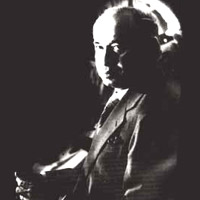
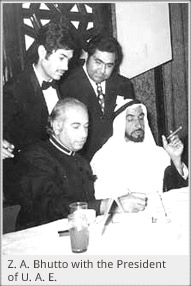 On December 30, 1973, Bhutto laid the foundation of Pakistan’s first steel mill at Pipri, near Karachi. On January 1, 1974, Bhutto nationalized all banks. On February 22, 1974, the second Islamic Summit was inaugurated in Lahore. Heads of States of most of the 38 Islamic countries attended the Summit.
On December 30, 1973, Bhutto laid the foundation of Pakistan’s first steel mill at Pipri, near Karachi. On January 1, 1974, Bhutto nationalized all banks. On February 22, 1974, the second Islamic Summit was inaugurated in Lahore. Heads of States of most of the 38 Islamic countries attended the Summit.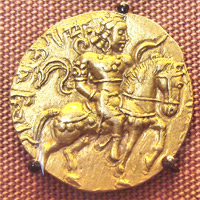

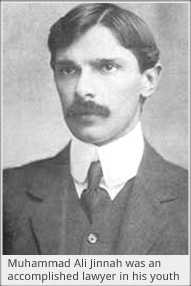 As a member of the Muslim League, Jinnah began to work for Hindu-Muslim unity. In 1917, the annual sessions of both the Congress and the League were held at Lucknow. The League session was presided over by Muhammad Ali Jinnah. It marked the culmination of his efforts towards Hindu-Muslim unity. Here, both the League and the Congress adopted a scheme of reforms known as the Lucknow Pact.
As a member of the Muslim League, Jinnah began to work for Hindu-Muslim unity. In 1917, the annual sessions of both the Congress and the League were held at Lucknow. The League session was presided over by Muhammad Ali Jinnah. It marked the culmination of his efforts towards Hindu-Muslim unity. Here, both the League and the Congress adopted a scheme of reforms known as the Lucknow Pact.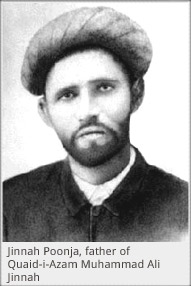 On April 19, 1918, Jinnah married Rutanbai. Their daughter, Dina was born a year later. In 1919, Jinnah resigned from his membership of the Imperial Legislative Council as protest against the “Rowlatt Act”.
On April 19, 1918, Jinnah married Rutanbai. Their daughter, Dina was born a year later. In 1919, Jinnah resigned from his membership of the Imperial Legislative Council as protest against the “Rowlatt Act”.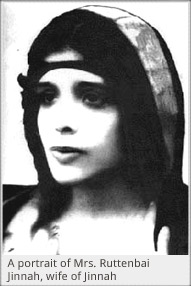 In 1929, Jinnah presented his famous Fourteen Points in response to the Nehru Report. When he returned from England, he reorganized the Muslim League. In 1934, he was elected as its permanent president.
In 1929, Jinnah presented his famous Fourteen Points in response to the Nehru Report. When he returned from England, he reorganized the Muslim League. In 1934, he was elected as its permanent president.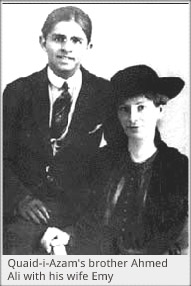 The Provincial Assembly elections of 1937 swept the Congress to power in eight provinces. After almost two years of oppressive rule, Muslims under the leadership of Jinnah, celebrated the Day of Deliverance at the end of Congress rule.
The Provincial Assembly elections of 1937 swept the Congress to power in eight provinces. After almost two years of oppressive rule, Muslims under the leadership of Jinnah, celebrated the Day of Deliverance at the end of Congress rule.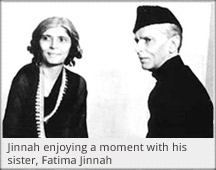 The establishment of Pakistan brought even greater responsibilities for Jinnah. The refugee problem, the withholding of Pakistani assets by India, and the Kashmir problem were a real test for the Quaid. However, his indomitable will prevailed. He worked out a sound economic policy, established an independent currency and the State Bank for Pakistan. He chose Karachi as the federal capital.
The establishment of Pakistan brought even greater responsibilities for Jinnah. The refugee problem, the withholding of Pakistani assets by India, and the Kashmir problem were a real test for the Quaid. However, his indomitable will prevailed. He worked out a sound economic policy, established an independent currency and the State Bank for Pakistan. He chose Karachi as the federal capital.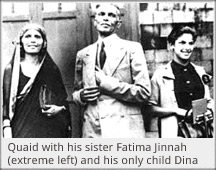

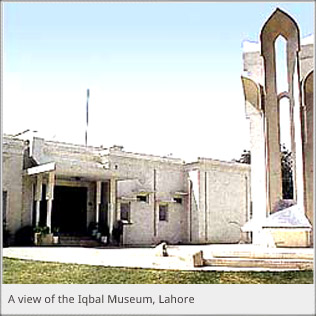 By 1928, his reputation as a great Muslim philosopher was solidly established and he was invited to deliver lectures at Hyderabad, Aligarh and Madras. These series of lectures were later published as a book “The Reconstruction of Religious Thought in Islam”. In 1930, Iqbal was invited to preside over the open session of the Muslim League at Allahabad. In his historic Allahabad Address, Iqbal visualized an independent and sovereign state for the Muslims of North-Western India. In 1932, Iqbal came to England as a Muslim delegate to the Third Round Table Conference.
By 1928, his reputation as a great Muslim philosopher was solidly established and he was invited to deliver lectures at Hyderabad, Aligarh and Madras. These series of lectures were later published as a book “The Reconstruction of Religious Thought in Islam”. In 1930, Iqbal was invited to preside over the open session of the Muslim League at Allahabad. In his historic Allahabad Address, Iqbal visualized an independent and sovereign state for the Muslims of North-Western India. In 1932, Iqbal came to England as a Muslim delegate to the Third Round Table Conference.
.jpg)
.jpg)
.jpg)
.jpg)
.jpg)
.jpg)
.jpg)
.jpg)
.jpg)
.jpg)
.jpg)
.jpg)
.jpg)
.jpg)
.jpg)
.jpg)
.jpg)
.jpg)
.jpg)
.jpg)
.jpg)
.jpg)
.jpg)
.jpg)
.jpg)
.jpg)
.jpg)
.jpg)
.jpg)
.jpg)
.jpg)
.jpg)
.jpg)
.jpg)
.jpg)
.jpg)
.jpg)
.jpg)
.jpg)
.jpg)
